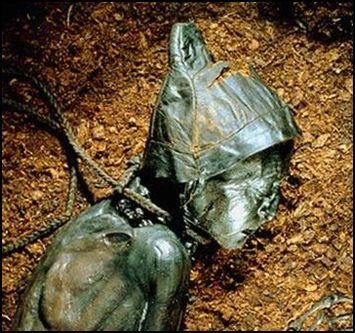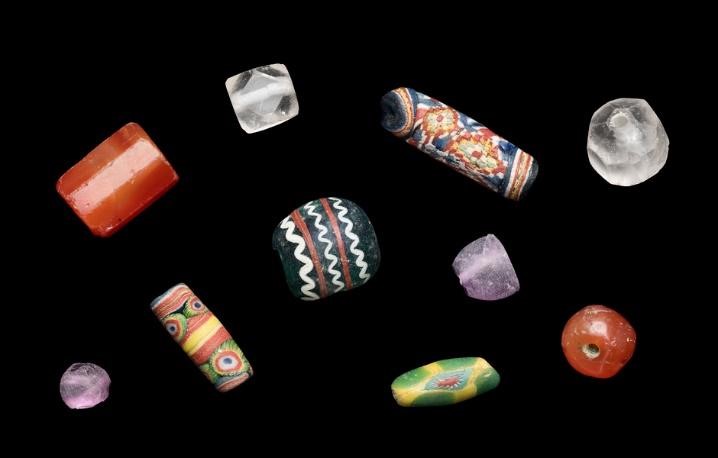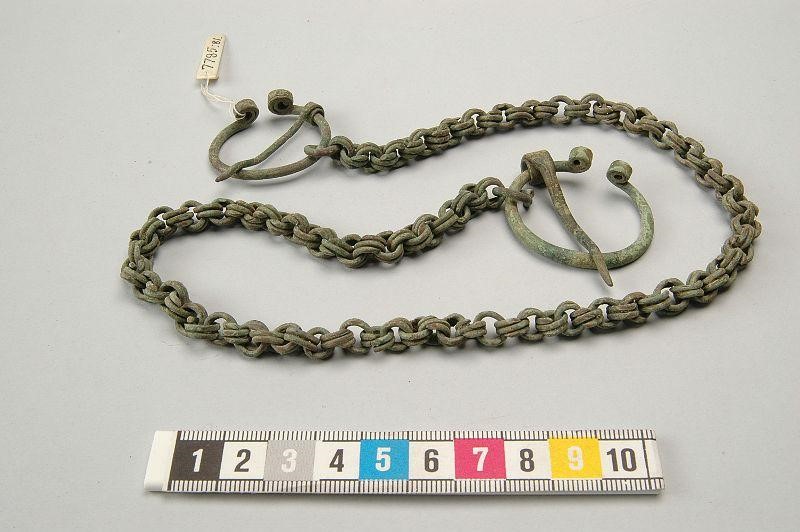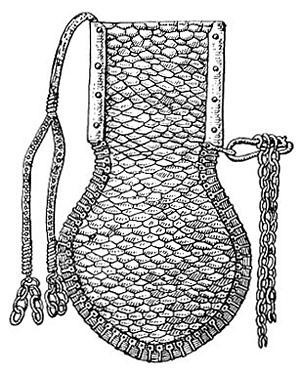A propos Vêtements viking
Fight, you coward hogs!
Let’s set Raven’s flag!!
Thor is with us!!!
Viking clothing
Series “Vikings” did good and bad favors to these very Vikings. Good favor is that interest in Vikings was rekindled. New people come to reenactment; old and experienced folk shakes off their Viking reenactment clothing. Green young blood is ready to wear horn helmets and gnaw shields, like berserks. And, here we comes to the bad favor – series fills absolutely wrong ideas about Viking period clothing up into young unexperienced minds. Surely, authentic sets sometimes appear on the screen, but there are so small quantity of them against the backdrop of obviously fantasy variants.
You may find out mistakes, made by producers of series in Viking warrior clothing and armor, and know more about Viking lady clothes for different social classes using the example of clothing of Scandinavian Goddesses. Here, we prepare the most detailed review of all clothing, which severe Northmen wore.
***
If we start from the very beginning – fabric, so “We say Vikings – we mean wool; we say wool – we mean Vikings!”. 80% of all historically correct Viking clothing, worn by northern wolves, were made of wool, from undershirts to the felted caps. By the way, as local cheap wool, so expensive imported Frisian and Anglo-Saxon fabrics were used.
Vikings’ fabrics were thick, but soft at the same time, and technology of felting was reaching such a level that fabric could look like a fur. Besides, for overclothes and adornments, they were making roggvarfeldr (fish fur) of rough piece with stared bundles of non-spuned wool. The main reason of such tricks was cold and moist climate, so in the first place, clothing of Northmen was warm and well protecting of rain and snow.
Colourants and its extraction conformed welfare, but most people were using local dyes, as they got skilled to dye clothing brightly and without oriental frills. There were various tones of green and brown, yellow, red and blue colors. However, for vibrant colors of blue, scarlet and yellow, they required imported colourants.
Linen was the second type of fabric, but it was quite expensive and not easily available. In conditions of northern climate, linen was more decorative, than hardwearing fabric, so only rich Scandinavians could afford odd impractical dresses that did not warm properly.
Silk was available just for konungs and their wives. Such material is delicate and poorly warming, so it had only status and decorative functions and was used mostly for embroidery and trimming.
Cotton was not found at all, even a single thread, so there are no satisfactory evidences of using it by Vikings.
***
Viking woman clothing
What about woman clothing, so it starts from straight-cut shirt with sleeves. There could be gores in the bottom; it was ankle-length; sleeves’ length could vary from zero to the wrist. Besides, wealthy northern ladies were wearing linen pleated underdresses.
Reconstruction of such shirts can be based on the remnants of fabric, founded in burial places of Kragelund, Hedeby and Birka and remodeled pattern cutting from Birka burial site 735.
Over undershirt, women often wore dress, similar to undershirt by cut (which could be knee-length), hangerock, cloak, and coat. Also, ladies could wear not wide pants under the shirt.
While women from lower social classes were wearing undershirt, belted dress and shoes, luxurious garment is more interesting.
***
Modern reenactors get inspiration for reconstruction of Vikings’ clothing from such sources as burial sites, figurines and stone ornamentations. One should use foreign textual descriptions as reference with caution – don’t forget about numerous translations, re-editions and certain prejudiced attitude of writers. Swedish burial site Birka is probably the main source (works of Agnes Geijer “Birka III. Die Textilfunde aus den Grabern”, Uppsala 1938 and Inga Hagg “Kvinnodrakten i Birka, AUN 2”, Uppsala 1974 boast the most significantly).
Here is layer-by-layer pattern of quite expensive women’s costume, based on Birka burial sites and recreated by Inga Hagg:
Undershirt is made of plain or pleated linen, neckline is fastened with round fibula. Short silk shirt with decorative trim is worn over it. Further, there is hangerock/apron dress on the oval (turtle) fibulas. Then, there is an overcoat, fastened with fibula. Finally, there is a cloak/cape, fastened with fibula as well.
As to hangerock, there are two main models. Inga Hagg suggests that there are two overlapped sheets of cloth, without open cuts. However, Flemming Bau describes hangerock as single-sheet of cloth, wrapped around body and not overlapped from the front, leaving wide cut. This cut could be covered with apron, which was hanging up to the oval fibulas on loops. If there were no apron, fibulas were connected with chains or string of beads.
Besides, there are four main combinations of hangerock, apron and cape, following by Flemming Bau: hangerock; hangerock and apron; hangerock, apron and cloak; hangerock and cloak.
Hangerock and apron, sewn together, and looking like complete apron dress, is one more popular version among reenactors:
You may admire all these combinations on the Valkyries figurines:
***
Vikings’ ladies had as various hair-does (braids, buns), so wore headwears (from simple kerchief to hats) that you may see on figurines of women warriors.
***
Viking man clothing
Similar to women’s clothing, men’s costume begins from shirt. As a rule, it was knee-length and worn outside pants. Design was similar to woman’s one. However, sometimes there were cuts on the side for more comfortable wearing. By the way, remnants of expensive linen men’s shirt of the XI century were survived in Viborg, Denmark. Its length is 37 inches.
Actually, length of men’s shirt varied from hips- to knee-length. So, length of the shirt from Högom (Sweden) was 28 inches. We may also see short shirts on the Oseberg tapestry fragments, stones from Gotland and rune stones from Sweden. However, at the same Oseberg tapestry and Gotland stones, there are paintings of men, who wear knee-length shirts. Also, you may see long shirts in manuscript “Liber Vitae” and on the Bayeux Tapestry.
Man figure from the scene of procession on the Oseberg tapestry and King Cnut the Great from the “Liber Vitae”, Winchester.
***
Pants of various design were in use among men: skinny, fitting leg tight down to the calf (broker); more loose pants, widened out or tied round under the knees. But, the most classy variant was wide trousers, for which many fabric were used, so it demonstrated wealth and high social status of wearer.
Model from Damendorf are an example of tight pants:
Wide pants are to be remodeled by rune stones and fabric fragments:
Low socks, knitted with needle, go with pants. For example, like these from Coppergate:
By the way, besides socks, fabric leg wrappers will be a necessary element for more or less presentable suit.
Civil men wore one more shirt over undershirt and pants; warriors wore wrap jacket Klappnerock.
Thanks to researches of Inga Hagg, stylized images on the rune stones and figurines, content of burial site Sutton Hoo and fragment from Hedeby, we have aware of this clothing.
There are drafts of the entire men’s costume, by Inga Hagg:
***
Men’s coats looked like big square pieces of thick woolen clothes. However, they also wore fur coats due to climate. So, they were not above gloves and mittens too.
***
Vikings’ headwears were quite various, though simple and hardwearing Viking hat of four or six gores, known as Birka hat, was the most popular one. We are sure you guessed it: headwears were named after finding in numerous burial places in Birka (832, 886, 944, 957, 798, 976).
Remnants of such headwears were also found in Hedeby:
Quite often, such headwears were decorated on the trim border (strictly speaking, hats were remodeled by the remnants of such adornments). In wintertime, men wore hats made of sheepskin, with fur inward.
Also, simple caps and floppy felt hats were in use. The last one acted also as kind of umbrella. When it was cold, tough-minded Vikings could wear headwears with underchin lacing. Besides, archaeologists actively dispute about wearing of hoods by Vikings.
Caps from Eyrarland (Iceland), Gotland (Sweden) and Rellingen (Sweden):
Octopartite cap of sheepskin with fur inward, Tollund (Denmark):
***
Ankle-high boots with fastenings on the sides were common footwear of Vikings. Usually, boots were sewn of goatskin. Men also wore higher boots with a flap, fastened on the ankle.
Here is boots collection from Hebedy museum:
Or, from the National Museum of Denmark:
There are women's shoe of Vikings’ epoch, found in Dublin:
Middle- and high-class people had buckles on their shoes. Material and quality of hammer-work varied. For example, there are iron buckles (Hebedy) and bronze buckles (Birka):
Regarding expensive belts, there are samples, which were found at burial site 1074 in Birka:
And, at sites 913 and 369 in Birka:
***
A few words about adornments. Money were not too popular at Vikings, so gold and silver fibulas, pins, buckles, brooches, belt strapends, bracelets, necklaces, pendants and other things had as functional and decorative aspects, so were kind of cash, which is always available.
And, the most important thing was that attires pointed at social status of owner. Materials, gems, handicraft, quantity of attires – all that spoke about a person in front of you – whether it is hired man or konung wife. And, if fibulas for hangerock and necklaces were only women’s adornments, so other things did not have reference to gender and were worn by both, men and women.
Besides, common accessory for both genders was a purse. Wide range of them are popular nowadays.
For example, drafts of these purses are based on the founding from sites 949 and 819 in Birka and tomb in Norra Abyggeby, Hille, Gastrikland:
Such interesting models were found in burial place 958 in Birka and in 5th sepulture of Veselovsk gravesite:
Also, soft flip purses were in use. Many of them were found in Birka, for example, at the 750 burial site:
One more interesting model of bag is sabertache. However, it was found only in men burial places:
Finally, the simplest and free-for-all model – pouches. It was a simple full-circle piece of leather with holes, tied up in the form of bag. Or, two pieces of leather, sewn together. Dozens of them were found in Birka and Hedeby.
***
Generally speaking, despite of the damnable climate and harsh life conditions, traditional Viking clothing was quite good-looking and multivarious. Everybody who wants to see it by himself, may visit Birka museum, The Swedish history Museum and Hedeby Viking Museum. And, after that, buy real Viking clothing at Steel Mastery ;-)
Viking clothing
 Scandinavian viking dresses of the Viking Age, there are a lot of studies that display viking women's clothing. Confusion began with archaeological research in Birka. More than 1,100 burials were studied between 1873 and 1895 by Hjalmar Stolpe.
Scandinavian viking dresses of the Viking Age, there are a lot of studies that display viking women's clothing. Confusion began with archaeological research in Birka. More than 1,100 burials were studied between 1873 and 1895 by Hjalmar Stolpe.
Archeologists decided that "typical Vikings" were buried in these burials, but studies have shown that these burials were either burials of the nobility, or that the dead were buried in the clothing of rich nordic people.
At the beginig of archaeological research, archeologists were more interested in such findings as: swords, fibulas, etc. Fragments of viking women`s clothes, or simply disappeared, or for a long time fell into the funds of museums.
Agnes Geier (Agnes Geijer) was the first who show an academic interest to tissues (remains of viking clothes) from Birka. By the time of the beginning of her research, any hope for an accurate reconstruction of clothes had already disappeared. Later, Geier reconstructed the viking women`s undershirt, over which was worn an "apron" (pinafore arrangement) with straps that were fastened with tortoise-shaped fibulae.
Many famous researchers, such as M.Hald in 1950 and Inga Hagg in 1974, continued the work of Geyer, and their reconstruction of the Scandinavian female costume of the Viking Age went to press.
Viking Clothes of the scandinavian nobility.
The lower viking dress.
 These rather simple viking dresses remained in the IX century without folds, but in the X century were more often pleated. Viking dresses reached an ankle length and fastened (in the 10th century) at the throat with an ordinary round fibula.
These rather simple viking dresses remained in the IX century without folds, but in the X century were more often pleated. Viking dresses reached an ankle length and fastened (in the 10th century) at the throat with an ordinary round fibula.  Pleated fragments are also found in York Vikings.
Pleated fragments are also found in York Vikings.
Pleated lower viking dresses differed slightly from modern pleated hemlines. It is assumed that this was a robe with folds in the entire length of the body, to which folded sleeves were sewn. These "folded viking shirts" were tightened around the neck with a lace. It seems difficult to determine what role this brothel played in this experiment. If the brooch was not only an ornament, it was probably used to fasten the outer garment or for earlier unplayed lower viking dresses. Many of these fibulae have a ring on the back side, and in some graves this ring is attached to a chain of chains of tortoise brooches. If the top dress is not worn, then such a fastening system is extremely inconvenient. It is more likely that these fibulae fastened the outer clothing.
Pleated sleeves of viking female outfit are reconstructed with both longitudinal (as represented by Judith Jesch, Gustavsson, Mallott, etc.) or transverse (Fleming Bau) folds. The latter resemble the men's and women's clothing of the Saxons and the find from the burial Mammen with double cuffs. Inga Hegg showed on the basis of the analysis of corrosion on the back of the fibula that the folds were horizontal, around the arms.
The remnants of the lower authentic viking dress are also found in Hedeby, a large commercial Danish center. They were also pleated, or, in a simpler version, with a hem extended with wedges. One of the finds was very long, lined with fluff and decorated with buttons from the ankle to the hem edge. Perhaps this is a local variant, that was used in Denmark.
Upper Viking Dress.

It was assumed that viking women`s dress was knee-length and decorated with braid. It was also assumed that the upper viking dress was usually sewn out of silk, and the cuffs of sleeves were decorated with expensive embroidery. However, a clear picture is still missing.
Not all women were buried in full costume, the fabric of various viking garb items is different, and not all materials are preserved in various tombs. In some cases, the dress (if it was worn) was made of wool with a rhombic weave OR from silk. With such a small number of materials found, it is possible to determine the length of clothing only from the remaining fragments of the braid.
At the same time, not every piece of viking clothing was decorated with braid. It is not known what kind of clothes were decorated with braid: a dress or a caftan or a raincoat.
Finds from Hedebyu represent another version of the dress. The Danish variant is much longer than the reconstruction from the Birka: the length is almost the same as the length of the viking undershirt. A similar variant is much closer in its length to later variants from Mooslund (Moselund, Denmark, ca. 1250) or Herjolfnes (Herjolfsnes, Greenland, ca. 1300).























































